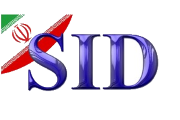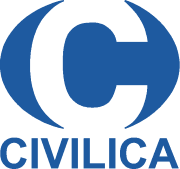Indexed in Scopus
Infection, Epidemiology and Microbiology is one of the TMU Press journals that is published by the responsibility of its Editor-in-Chief and Editorial Board in the determined scopes.
Currently known as: Infection, Epidemiology and Microbiology (eISSN 2588-4115)
Formerly known as: Infection, Epidemiology and Medicine (eISSN 2345-4946)
Infection, Epidemiology and Medicine has been changed to Infection, Epidemiology and Microbiology (IEM) since September 2017, according to Iran Ministry of Health and Medical Education recommendation. IEM is a peer-reviewed, double blind and open access journal dedicated to the publication of manuscripts on topics concerning bacterial, fungal, parasitic and viral infections, including their epidemiology, molecular epidemiology, diagnosis, prevention and clinical management. This journal accepts Original Research, Brief Communication, Case Report, Review and Letter to the Editor within the scope of the journal.
Peer-review process
All submitted articles are evaluated at the submission to meet the structural and subject principles of Infection Epidemiology and Microbiology. The matched articles will gone under a double-blinded peer-review process by at least 3 reviewers (expert in the field who are not part of the journal’s editorial staff) who are selected by the Editorial Board members according to their field specialties. The Editorial Board members have the final responsibility to select the articles. The best effort of the journal is to inform the authors about the acceptance or rejection of their manuscript within two to three months. If you are interested in reviewing manuscript in collaboration with us, please send your resume along with a request to iem@modares.ac.ir. The editorial board of the journal will review your resume and will be in contact with you. After observing the reviewers' comments, the authors will revise the manuscript based of referees comments and send their response (as well as revised manuscript) to the journal and the reviewers.
Governing body
Infection Epidemiology and Microbiology is under the scientific control of Editorial Board whose members are recognized experts in the subject areas included within the journal’s scope. Some executive roles of the Editorial Board members are delegated to the Editor-in-Chief who is well-known in the journal’s scope.
Editorial team
Infection Epidemiology and Microbiology is under the scientific supervision of the Editorial Team whose members are all experts with high number of publications in their field.
Author fees/Access
There are No Fees or Charges at all for submission, reviewing and publishing processes in Infection Epidemiology and Microbiology.
Infection Epidemiology and Microbiology follows the Bethesda Statement on Open Access Publishing.
Publication rules: terms and conditions
Human Rights
Reporting assurance statement for human subjects in the end of each article:
- Consent from study participants
-Compatibility of the study with the ethical guidelines of the 1975 Declaration of Helsinki
- Strictly follow the instructions of the COPE and ICMJE in both experimental and clinical studies, including ethical and scientific subjects. Despite of necessity of stating related declaration by authors, otherwise, the following sentence should be given: None declared.
Reporting assurance statement for animal subjects in the end of each article:
- In case of animal experimentation, all animals must receive humane care; according to "Guide for the Care and Use of Laboratory Animals"(published by the last NIH publication-1985) and Basel Declaration which shows outlines fundamental as well as ethical guidelines at the International Council for Laboratory Animal Science (ICLAS).
- It is highly required to write an ethical approval code for all of submission related to animal experiences.
Ethical Approval Code
It is required for the authors to get the ethical permission from their institute. In this case, ethical approval code is strongly recommended for all related issues to studies such as medical documents and human samples. In addition, authors' local institutes (such as national center of ethics or ethics department of universities) must approve this code.
Informed consent
In addition to write an informed consent in the end of article, the author should also include a statement that all experiments were performed in compliance with the relevant laws and institutional guidelines. It is also necessary to bring the statement related to institutional committee(s) that has approved the experiments
Plagiarism
Similarity score
In Infection Epidemiology and Microbiology journal, the similarity is checked using "iThenticate" in 2 phase by our online system; early submission and before publishing stage. Authors must ensure that their study is an original work completely and if they use other works, they should refer it properly.
Acceptance level in the case of similarity
Since our principle indicate that science should not be repeated, so any sentences in submitted manuscripts must be unique and consequently, pre-defining a specific level of similarity is not feasible. The COPE terms and conditions is considered regarding similarity and plagiarism.
Duties of authors
Reporting standards
Authors of reports of original research should present an accurate account of the work performed as well as an objective discussion of its significance. Underlying data should be represented accurately in the paper. A paper should contain sufficient detail and references to permit others to replicate the work. Fraudulent or knowingly inaccurate statements constitute unethical behavior and are unacceptable.
Data Access and Retention
Authors are asked to provide the raw data in connection with a paper for editorial review, and should be prepared to provide public access to such data (consistent with the ALPSP-STM Statement on Data and Databases), if practicable, and should in any event be prepared to retain such data for a reasonable time after publication.
Originality and Plagiarism
The authors should ensure that they have written entirely original works, and if the authors have used the work and/or words of others that this has been appropriately cited or quoted.
Multiple, Redundant or Concurrent Publication
An author should not in general publish manuscripts describing essentially the same research in more than one journal or primary publication. Submitting the same manuscript to more than one journal concurrently constitutes unethical publishing behavior and is unacceptable.
Acknowledgement of Sources
Proper acknowledgment of the work of others must always be given. Authors should cite publications that have been influential in determining the nature of the reported work.
Authorship of the Paper
Authorship should be limited to those who have made a significant contribution to the conception, design, execution, or interpretation of the reported study. All those who have made significant contributions should be listed as co-authors. Where there are others who have participated in certain substantive aspects of the research project, they should be acknowledged or listed as contributors.
The corresponding author should ensure that all appropriate co-authors and no inappropriate co-authors are included on the paper, and that all co-authors have seen and approved the final version of the paper and have agreed to its submission for publication.
Change to Authorship
Hazards and Human or Animal Subjects
If the work involves chemicals, procedures or equipment that have any unusual hazards inherent in their use, the author must clearly identify these in the manuscript.
Disclosure and Conflicts of Interest
All authors should disclose in their manuscript any financial or other substantive conflict of interest that might be construed to influence the results or interpretation of their manuscript. All sources of financial support for the project should be disclosed.
Fundamental errors in published works
When an author discovers a significant error or inaccuracy in his/her own published work, it is the author’s obligation to promptly notify the journal editor or publisher and cooperate with the editor to retract or correct the paper.
Duties of Reviewers
Contribution to Editorial Decisions
Peer review assists the editor in making editorial decisions and through the editorial communications with the author may also assist the author in improving the paper.
Promptness
Any selected referee who feels unqualified to review the research reported in a manuscript or knows that its prompt review will be impossible should notify the editor and excuse himself from the review process.
Confidentiality
Any manuscripts received for review must be treated as confidential documents. They must not be shown to or discussed with others except as authorized by the editor.
Standards of Objectivity
Reviews should be conducted objectively. Personal criticism of the author is inappropriate. Referees should express their views clearly with supporting arguments.
Acknowledgement of Sources
Reviewers should identify relevant published work that has not been cited by the authors. Any statement that an observation, derivation, or argument had been previously reported should be accompanied by the relevant citation. A reviewer should also call to the editor’s attention any substantial similarity or overlap between the manuscript under consideration and any other published paper of which they have personal knowledge.
Disclosure and Conflict of Interest
Privileged information or ideas obtained through peer review must be kept confidential and not used for personal advantage. Reviewers should not consider manuscripts in which they have conflicts of interest resulting from competitive, collaborative, or other relationships or connections with any of the authors, companies, or institutions connected to the papers.
Peer reviewer responsibilities toward the author
-
Authors must be on time in providing written and unbiased feedback based on the scientific value of the work.
-
Reviewers should be responsible at providing clear and relevant comments to the manuscripts, helping to the authors at progressing quality of the work.
-
Considering personal & financial interests is forbidden.
-
The process of reviewing must be maintained confidential completely.
Peer reviewer responsibilities toward the editor
-
Determining scientific merit, originality, and scope of the work; indicating ways to improve it, and giving decisions based on rating
-
The direct contact of the judges with the authors should be strictly avoided; Except with the permission and information of the editor
-
Quickly informing the editor when any problem occurs in reviewing the articles and introducing alternative referees to do that work
-
Considering the guidelines of the journal and the editor in terms of sufficient minimums for judging an article
-
Providing clear and well-reasoned reasons for deciding on an article
-
Complete avoidance of pursuing any personal or financial interests
Ethical Responsibilities of Reviewers
-
In addition to keeping the reviewers' comments confidential, the original and copy of the manuscript should not be kept with the reviewers.
-
Reviewers' decisions must be solely based on scientific merit and should not be influenced by reviewers' financial interests or their ethnic, racial, and religious attitudes.
-
The vision of this journal is to find expert reviewers in any field to which manuscripts are send to them. if the reviewers do not have sufficient expertise regarding the manuscript, they should refuse to accept the refereeing.
-
Reviewer should be responsible for completing the review within the pre-defined time and respect to the limitations of the journal.
Editorial independence & Responsibility
Based on the strategy of this journal, the practical independence of all reviewers, editors-in-chief and associate editors from the point of view of the publisher is fully guaranteed and they will make decisions solely based on their scientific qualifications.
Principles of Editorial independence
Since the Editors-in-chief is generally academician, her payments are independent of their journal activities and. She is not paid for the journal activities. Therefore, our journal does not pay any salary to the editors.
Publication Ethics
-
All IEM editorial board members, reviewers and authors must adhere to and obey guidelines defined by COPE.
-
Corresponding author is the main responsible and owner of the article so she/he can withdraw the article before entering the review process or when a revision is asked for.
-
Authors cannot make major changes in the article after acceptance without a serious reason.
-
All editorial members and authors must resolve to publish any kind of corrections honestly and completely.
-
Any notes of plagiarism, data fabrication and falsification, simultaneous submission, duplicate publication, improper author contribution or attribution, citation manipulation fraudulent data or any other kinds of fraud must be reported completely to COPE.
-
In case of documented violations of any of the above mentioned policies in any journal, immediate rejection of the manuscript and prohibition against all of the authors for any new submissions for a minimum of 36 months will be applied.
Republishing Policy
Infection Epidemiology and Microbiology journal strongly advises authors to refrain from submitting articles that have already been accepted elsewhere, even if they were accepted in a language other than English or published in local journal.
Withdrawal Regulations
Withdrawal of an article can occur in the reviewing or pre-publication processes. it might be because of a mistake on pre- publication in other journals or not considering journal's ethical codes. In addition, it may be happened due to existing some inconsistency in the declaration of authors’ contributions, or any doubt about accuracy of data, etc. To submit your withdrawal request please send your request to(iem@modares.ac.ir).
Retraction Regulations
Although retraction may be initiated by the journal's editors or by the author(s), however, the mail responsibility about retraction goes to the editors of our journal, even if all or some authors refuse to retract the publication. As soon as editors are convinced that a specific publication is seriously flawed, the published title must be and retracted.
What Are the Compelling Reasons?
-
High similarity score
-
Author's bogus claims
-
Misuse of data
-
Not considering ethical codes
-
Undisclosed competing interest
-
Multiple submission and redundant publication
Article Retraction Process
Authors and/or editor of the journal must sign a retraction statement entitled "Retraction: [article title]. This statement should be published in the paginated part of a subsequent issue of the journal and listed in the contents list. Also, a hyperlink is prepared to the original article in the electronic version. Despite of unchanged original article, the HTML version of the document is removed and a watermark on .pdf file of the article must be made to show that it is "retracted".
Copyright
The content of Infection Epidemiology and Microbiology is under the Creative Commons Attribution-NonCommercial 4.0 International Public License. To the extent this Public License may be interpreted as a contract, we are granted the Licensed Rights in consideration of your acceptance of these terms and conditions, and the Licensor grants you such rights in consideration of benefits the Licensor receives from making the Licensed Material available under these terms and conditions.
Process for identification of and dealing with allegations of research misconduct
Publisher and editors of Infection Epidemiology and Microbiology are reasonable to identify and prevent the publication of papers where research misconduct has occurred, including plagiarism, citation manipulation, and data falsification/fabrication, among others. In doing so, Infection Epidemiology and Microbiology follows COPE’s guidelines in dealing with allegations.
Ownership and management
Infection Epidemiology and Microbiology is owned, managed, and published by Tarbiat Modares University, Iran.
Conflicts of interests
All Infection Epidemiology and Microbiology Editorial Board members and the Editor-in-Chief submitted articles are gone under the same reviewing process as the other authors gone. In the cases that a reviewer suspects undisclosed conflict of interest in a submitted manuscript or a reader suspects undisclosed conflict of interest in a published article (all authors are filling the ICMJE Form for Disclosure of Potential Conflicts of Interest at the submission time) Infection Epidemiology and Microbiology will follow COPE’s guidelines.
Complaints and Appeals
Infection Epidemiology and Microbiology follows COPE’s guidelines on appeals to journal editor decisions and complaints about a journal’s editorial management of the peer-review process. Any complaint or appeal could be sent to the publisher in these way: Submit a ticket via Publisher Support at https://journals.modares.ac.ir/
Revenue sources/Advertising/Direct marketing
Infection Epidemiology and Microbiology is financially supported completely by Tarbiat Modares University, Iran, and has no other sources for earning funds. Infection Epidemiology and Microbiology accepts No advertisements in the site or even as a report article.
Publishing schedule/Archiving
Also Infection Epidemiology and Microbiology is included at EBSCOhost, Google Scholar, DOAJ, ISC (Islamic world science citation center), ICI (World of Journals) and Scopus and has the plan to enter to PubMed and the Web of Science database
Director-in-charge
Bakhshi, Bita; - of Medical Bacteriology
Affiliation: Tarbiat Modares University, Tehran, Iran
Email: b.bakhshi@modares.ac.ir
Tel: +982182884558
Editor-in-chief
Bakhshi, Bita; - of Medical Bacteriology
Affiliation: Tarbiat Modares University, Tehran, Iran
Email: b.bakhshi@modares.ac.ir
Tel: +982182884558
Editorial Board
Petrosillo, Nicola; - of Infectious Diseases
Affiliation: National Institute for Infectious Diseases, Rome, Italy
Email: nicola.petrosillo@inmi.it
Tel: -
Sigfrid Hoffner, Sven Erik; - of Medical Microbiology
Affiliation: MTC/ Karolinska Institutet, Stockholm, Sweden
Email: sven.hoffner@ki.se
Tel: -
Najar-Peerayeh, Shahin; - of Bacteriology
Affiliation: Tarbiat Modares University, Tehran, Iran
Email: najarp_s@modares.ac.ir
Tel: -
Dupouy-Camet, Jean; - of Parasitology
Affiliation: Descartes University, Paris, France
Email: jean.dupouy-camet@orange.fr
Tel: -
Doganay, Mehmet; - of Infectious Diseases
Affiliation: Erciyes University, Kayseri, Turkey
Email: mdoganay@erciyes.edu.tr
Tel: -
Anné, Jozef; - of Molecular Bacteriology
Affiliation: University of Leuven, Leuven, Belgium
Email: jozef.anne@kuleuven.be
Tel: -
Dalimi-Asl, Abdolhossein; - of Medical Parasitology
Affiliation: Tarbiat Modares University, Tehran, Iran
Email: dalimi_a@modares.ac.ir
Tel: -
Kurtböke, Ipek; - of Environmental Microbiology
Affiliation: University of the Sunshine Coast, Queensland, Australia
Email: ikurtbok@usc.edu
Tel: +61 (7) 5430 2819
Katouli, Mohammad; - of Medical Microbiology
Affiliation: University of the Sunshine Coast, Queensland, Australia
Email: mkatouli@usc.edu.au
Tel: -
Kazemnejad, Anooshirvan; - of Biostatistics
Affiliation: Tarbiat Modares University, Tehran, Iran
Email: kazem_an@modares.ac.ir
Tel: -
Owlia, Parviz; - of Medical Bacteriology
Affiliation: Shahed University, Tehran, Iran
Email: owlia@yahoo.com
Tel: -
Pourshafie, Mohammad R; - of Medical Microbiology
Affiliation: Pasteur Institute of Iran, Tehran, Iran
Email: pour@pasteur.ac.ir
Tel: -
Rezaie, Sassan; - of Medical Mycology
Affiliation: Tehran University of Medical Science, Tehran, Iran
Email: srezaie@sina.tums.ac.ir
Tel: -
Talebi-Taher, Mahshid; - of Medicine, Infectious Diseases
Affiliation: Tehran University of Medical Science, Tehran, Iran
Email: mtalebitaher2000@yahoo.com
Tel: -
Karimi-Arzenani, Mohsen; - of Medical Genetics
Affiliation: Karolinska Institute, Stockholm, Sweden
Email: mohsen.karimi@ki.se
Tel: -
Amini-Bavil-Olyaee, Samad; - of Virology
Affiliation: University of Southern California, Los Angeles, USA
Email: aminibav@usc.edu
Tel: -
Korachi, May; -
Affiliation: Yeditepe University, Istanbul, Turkey
Email: mkorachi@yeditepe.edu.tr
Tel: -
Choodari-Oskooei, Babak; Senior Research Associate of Medical Statistician and Medical Statistician
Affiliation: MRC Clinical Trials Unit at UCL, London, United Kingdom
Email: b.choodari-oskooei@ucl.ac.uk
Tel: -
Ho, Jeffery; - of Molecular Epidemiology
Affiliation: Prince of Wales Hospital, Shatin, Hong Kong
Email: jeffho@cuhk.edu.hk
Tel: -



























































